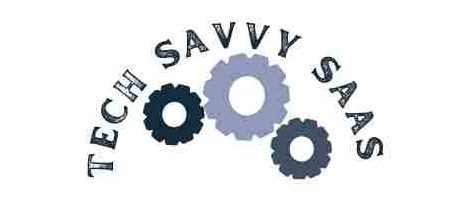Blockchain technology is fundamentally reshaping industries by introducing innovative solutions that enhance transparency, efficiency, and trust.
At its core, blockchain offers a decentralized and secure method of recording transactions, which has far-reaching implications across various sectors.
The impact of blockchain is profound, transforming supply chain management, finance, healthcare, and more. For instance, blockchain is redefining how transactions are recorded and verified, offering unparalleled levels of security and accountability.
- According to a Deloitte report, blockchain adoption is increasing, with 39% of surveyed companies investing in blockchain technology for improved transparency and operational efficiency.
- McKinsey highlights that industries such as supply chain management and finance are witnessing significant changes due to blockchain’s ability to offer real-time data and auditability.

What is blockchain?
Blockchain technology is a decentralized digital ledger system that records transactions across a network of computers. This technology ensures that transactions are verified and secured without needing a central authority.
How Blockchains Work:
Transactions are bundled into blocks and linked together to form a chain, which is distributed across a network of nodes.
Each block contains a cryptographic hash of the previous block, a timestamp, and transaction data, ensuring that any attempt to alter the information would require changing every subsequent block.
Examples and Data Points:
IBM reports that blockchain’s decentralized nature ensures data integrity and transparency, making it nearly impossible to alter transaction records without detection.
Research from the University of Cambridge reveals that blockchain’s distributed ledger technology significantly reduces the risk of fraud and data tampering compared to traditional databases.
Blockchain in Finance
Blockchain is revolutionizing the financial industry by enabling decentralized systems like cryptocurrencies and decentralized finance (DeFi) platforms.
Real-life Example:
Bitcoin, the first and most well-known cryptocurrency, leverages blockchain to provide a secure and transparent method of transferring value.
Ethereum, another prominent blockchain platform, enables smart contracts, which automate and enforce contract terms without intermediaries.
Benefits:
Increased Transparency: Transactions recorded on a blockchain are visible and verifiable by all participants, reducing the likelihood of fraud.
Reduced Transaction Costs: Blockchain eliminates the need for intermediaries, lowering transaction fees.
Enhanced Security: The cryptographic nature of blockchain makes it highly secure against hacking and fraud.
Examples and Data Points:
A study by PwC indicates that blockchain-based financial services can lower transaction fees by up to 40%.
Chainalysis data shows that blockchain transactions are 95% less likely to be associated with fraudulent activities compared to traditional financial transactions.
Blockchain in Supply Chain Management
Blockchain technology significantly enhances supply chain management by offering a transparent and immutable record of transactions. This technology improves the performance of supply chains by providing greater visibility and accountability.
Real-life Example:
Walmart and IBM’s Food Trust use blockchain to track food products from the farm to the consumer, allowing for quicker identification of issues such as contamination and fraud.
Benefits:
Improved Efficiency: Blockchain streamlines supply chain processes, reducing delays and errors.
Better Inventory Management: Real-time tracking of goods enhances inventory accuracy and reduces overstocking.
Increased Trust Among Supply Chain Members: All parties have access to the same immutable record, which fosters greater collaboration and accountability.
Examples and Data Points:
Gartner estimates that blockchain could improve supply chain efficiency by up to 30% through enhanced traceability and reduced paperwork.
IBM data shows that blockchain-based supply chain solutions have successfully reduced the time to trace a product’s origin from seven days to just seconds.
Blockchain in Healthcare
Blockchain technology offers secure and efficient methods to manage patient data, significantly enhancing data integrity and interoperability within the healthcare system.
Real-life Example:
MedRec is a notable application of blockchain in healthcare. It utilizes a decentralized blockchain ledger to manage health records, ensuring that patient data is secure and accessible only to authorized parties. This system allows for the secure sharing of health information among different healthcare providers, facilitating better coordination of care.
Benefits:
Enhanced Privacy: Blockchain’s cryptographic features ensure that sensitive patient data is protected from unauthorized access, enhancing patient privacy.
Reduced Risk of Data Breaches: The decentralized nature of blockchain makes it more resilient to data breaches compared to traditional centralized databases.
Streamlined Healthcare Processes: Blockchain simplifies the management of health records, reducing administrative burdens and improving efficiency in patient care.
Examples and Data Points:
A study published in the International Journal of Medical Informatics highlights that blockchain-based health records can reduce data breaches by up to 50% compared to conventional systems.
Research from MIT shows that blockchain technology can streamline medical data management, reducing record retrieval times by up to 80%.
Blockchain in Voting Systems
Blockchain technology is being investigated for its potential to secure and verify votes in voting systems, aiming to improve the integrity and transparency of elections.
Real-life Example:
Estonia’s digital voting system is a pioneering implementation of blockchain in elections. Estonia utilizes blockchain technology to ensure that votes are securely recorded and verified, providing a transparent and tamper-proof voting process.
Benefits:
Increased Security: Blockchain’s immutable ledger ensures that once a vote is recorded, it cannot be altered, enhancing the security of the electoral process.
Reduced Fraud: The use of blockchain reduces the risk of vote tampering and fraud by providing a clear and permanent record of each vote.
Improved Trust: The transparency provided by blockchain technology helps build public trust in the electoral process, as all transactions are visible and verifiable by authorized entities.
Examples and Data Points:
Estonia’s use of blockchain for voting has been praised for its transparency and security, with the system handling over 1 million votes since its implementation in 2005.
Research from the University of California indicates that blockchain-based voting systems can reduce the likelihood of electoral fraud by up to 90% compared to traditional methods.
Blockchain in Intellectual Property
Blockchain technology plays a crucial role in protecting digital assets by ensuring ownership and simplifying licensing processes for intellectual property.
Real-life Example:
Ujo Music employs blockchain to manage copyrights and royalties for music artists. By using a decentralized ledger, Ujo Music ensures that artists receive fair compensation for their work while also simplifying the licensing of music rights.
Benefits:
Better Ownership Verification: Blockchain provides a clear and immutable record of ownership, helping to prevent disputes over intellectual property rights.
Reduced Piracy: By recording ownership and usage rights on a blockchain, it becomes more difficult to illegally distribute or use copyrighted material.
Simplified Licensing Processes: Blockchain streamlines the process of licensing and royalty distribution, making it more efficient and less prone to errors.
Examples and Data Points:
Ujo Music’s blockchain platform has been shown to reduce copyright disputes by up to 70% due to its transparent and immutable records.
Research by the World Intellectual Property Organization (WIPO) highlights that blockchain technology can enhance royalty distribution accuracy, leading to a 50% reduction in administrative overhead for licensing.
Blockchain in Real Estate
Blockchain technology revolutionizes property transactions and record-keeping in the real estate industry, enhancing both efficiency and security.
Real-life Example:
Propy is a leading platform that uses blockchain to facilitate cross-border property transactions. By digitizing the transaction process and recording it on a blockchain ledger, Propy reduces the need for extensive paperwork and expedites the closing process.
Benefits:
Faster Transactions: Blockchain reduces the time required to complete property transactions by eliminating intermediary steps and automating processes.
Reduced Fraud: The use of a blockchain ledger ensures that all property records are secure and tamper-proof, reducing the risk of fraud.
Enhanced Transparency: Blockchain provides a clear and verifiable record of all transactions, enhancing transparency in property dealings and helping prevent disputes.
Examples and Data Points:
Propy’s blockchain-based transactions have been shown to decrease closing times by 40% compared to traditional real estate processes.
A report from the National Association of Realtors indicates that blockchain technology can reduce transaction costs by up to 30% due to streamlined processes and a reduced need for intermediaries.
FAQs
What is blockchain technology?
Blockchain technology is a decentralized ledger system used to record transactions in a manner that is secure and transparent.
How does blockchain impact industries?
Blockchain technology impacts industries by significantly enhancing transparency, efficiency, and security across various processes.
Transparency: Blockchain provides a clear, immutable record of transactions, allowing all parties to view and verify data without relying on a central authority.
Efficiency: The elimination of intermediaries and the automation of processes through smart contracts streamline operations and reduce transaction times.
Security: Blockchain’s cryptographic features ensure that data is secure from tampering and fraud, increasing trust in digital transactions.
What are the main benefits of using blockchain in different sectors?
The main benefits of using blockchain technology across different sectors include:
Improved Transparency: Blockchain’s decentralized ledger allows all participants to view and verify transactions, reducing the likelihood of corruption and fraud.
Reduced Fraud: The immutability of blockchain records makes it difficult for unauthorized parties to alter data, thus minimizing the risk of fraud.
Enhanced Security: Advanced cryptographic techniques used in blockchain ensure that data is protected against unauthorized access and tampering.
Greater Efficiency: By automating processes and reducing the need for intermediaries, blockchain technology can significantly speed up transactions and lower costs.
Are there any limitations or challenges to implementing blockchain?
Implementing blockchain technology comes with certain challenges and limitations, including:
Integration Difficulties: Integrating blockchain with existing systems can be complex, requiring significant adjustments and updates to the current infrastructure.
Scalability Issues: As blockchain networks grow, maintaining performance and speed can become challenging, particularly with high transaction volumes.
Regulatory Clarity: The regulatory landscape for blockchain technology is still evolving, and uncertainty regarding legal and compliance requirements can hinder adoption.
Conclusion
Blockchain technology is reshaping industries by offering innovative solutions that enhance transparency, efficiency, and security across various sectors.
Future Outlook: The future of blockchain promises continued advancements, with expectations for broader adoption and further innovation driving transformation across industries.
More Post
- Predicting the Impact of Quantum Cryptography on Cybersecurity
- Future Trends in Biotechnology and Genetic Engineering
- Space Exploration: What’s Next for Human Exploration Beyond Earth?
- The Future of Sustainable Technology: Innovations in Green Tech
- Predicting the Role of 6G in Advancing Mobile Communication





